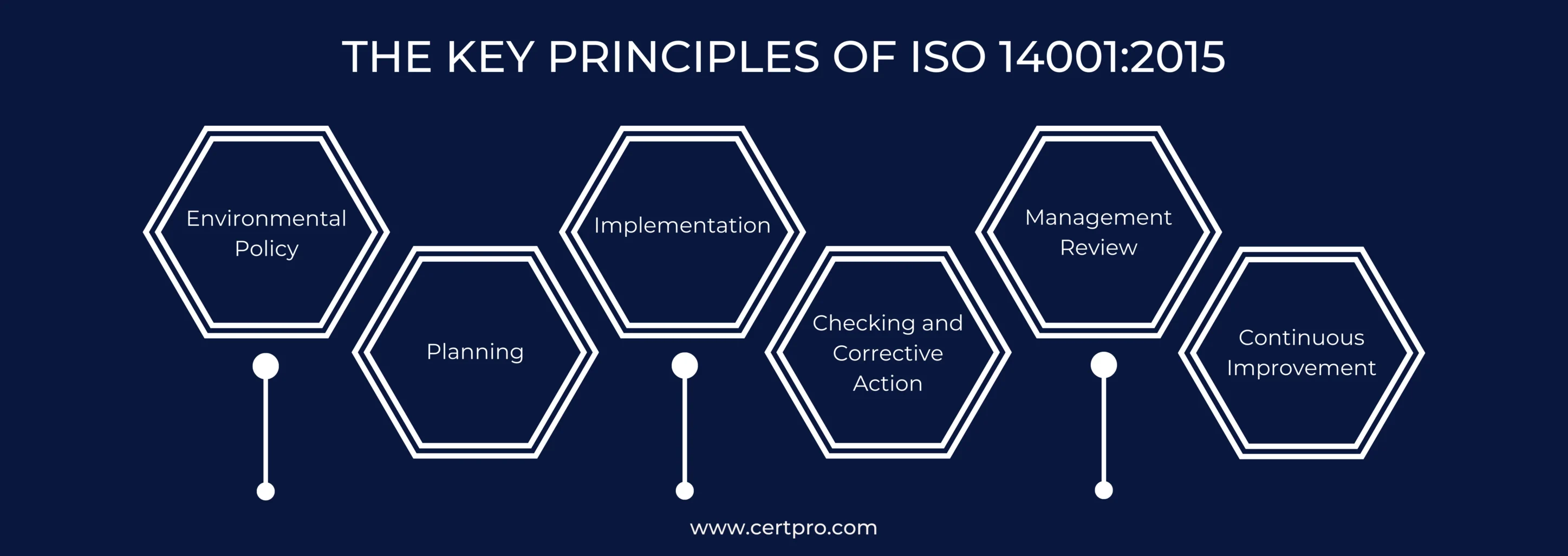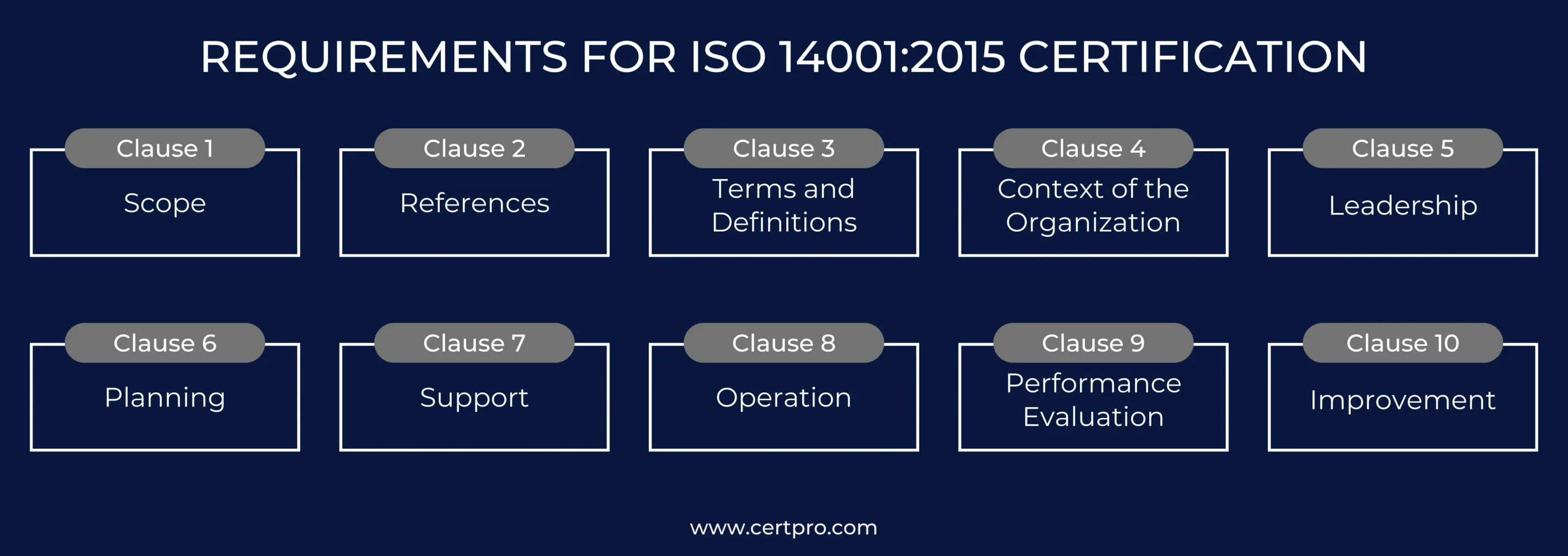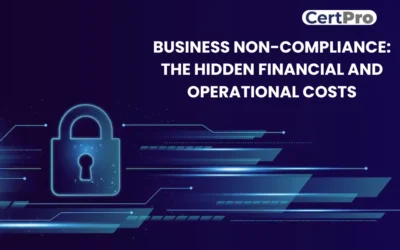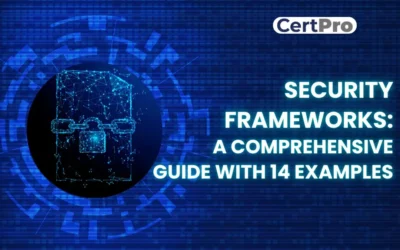ISO 14001:2015
ENVIRONMENTAL MANAGEMENT SYSTEM
ISO 14001:2015 certification is a globally acknowledged certification. It validates an organization’s adherence to Environmental Management Systems (EMS). Additionally, the certification describes the company’s efforts to reduce its environmental impact. Further, it ensures continuous operations. Similarly, a beneficial interaction between economic activity and the environment is vital. Organizations can effectively recognize and handle environmental dangers by implementing the ISO 14001:2015 standard. Moreover, it guarantees compliance with standards. It also reduces waste and pollution and lowers ecological dangers. Consequently, the standard facilitates efficient operations processes to promote sustainability. The ISO 14001 certification is in great demand. Companies understand the value of responsibility. Hence, it gives you a competitive advantage and business growth. Additionally, it satisfies the standards of environmentalists.
Getting certified with ISO 14001 certification has several advantages. First, it guarantees adherence to the law and improves environmental performance. In addition, it reduces operating costs and boosts stakeholder confidence. Furthermore, the standards enhance a positive brand image and open up new businesses. Finally, they promote long-term sustainability and drive innovation. Overall, ISO 14001:2015 certification is essential. It ensures environmentally friendly practices that support sustainable operations. Businesses can cut costs by implementing the standard.

Certification and Auditing Services by CertPro for ISO 14001:2015
It is clear to CertPro how important ISO 14001:2015 certification is for your organization. Because of this, we offer tailored guidance and suggestions for you. In addition, our skilled staff sets up an EMS that works well and follows the rules of the business. We also sped up the approval process, which makes the best use of resources and reduces downtime. Thus, CertPro makes following ISO 14001 comfortable and affordable. We maintain quality at affordable prices. You can trust CertPro to help your business get ISO 14001 certified. We ensure that your company stays certified. This shows that you care about preserving and following the law.
Why choose CertPro for ISO 14001:2015 certification and auditing?
CertPro is the best choice for ISO 14001:2015 certification and auditing services. Our team can help you with the certification process in a way that fits your needs. CertPro has worked in environmental management for almost decades and has helped multiple clients. We make it easy for your business goals to be met while strictly following environmental laws and rules. You may build your image as a trustworthy leader by using CertPro. It also lowers the risk to the environment and shows that you care about doing things that aren’t harmful to your environment.
| Factors | CertPro Advantage |
|---|---|
| Time to Certification | 4x faster than traditional approaches |
| Price | Competitive rates with flexible options |
| Process | Streamlined and efficient methodology |
| Expertise | 10+ years of industry experience |
CertPro’s Cost-Effective Approach to ISO 14001:2015 Certification
CertPro offers affordable ISO 14001:2015 certification. We maintain high-quality standards. Moreover, we streamline the process, which helps to maximize resources and ensures adherence to environmental regulations. CertPro is a smart choice for compliance as we offer customized services for your business. Additionally, we conduct comprehensive audits and smooth certification guidance. Furthermore, CertPro provides a transparent, economical, and wise route to certification.
| No. of employees | Timeline | Cost (approx.) |
| 1 – 25 | 4 weeks | 2500 USD |
| 25-100 | 6 weeks | 4500 USD |
| 100-250 | 8 weeks | 7500 USD |
| 250 plus | 8-12 weeks | Custom plans |
EXPLORING ISO 14001:2015 A COMPREHENSIVE GUIDE TO ENVIRONMENTAL MANAGEMENT SYSTEMS
The ISO 14001 standard is globally acknowledged. It sets criteria for an Environmental Management System (EMS) in organizations. Moreover, it provides a framework to improve environmental performance. Organizations can identify and manage environmental aspects, set objectives, implement controls, and conduct regular reviews. Additionally, it promotes a proactive approach to environmental management. Compliance with regulations encourages the continuous improvement of sustainable practices.
The 2015 version of ISO 14001 adopts a strategic approach. It uses a risk-based perspective and emphasizes context analysis and stakeholder engagement. Furthermore, it considers the lifecycle perspective and integrates with business processes. Continuous improvement is also a strong focus. The previous version (2004) emphasized compliance and procedural requirements in environmental management systems.
PURPOSE OF ISO 14001:2015
ISO 14001 enables organizations to manage their environmental responsibilities. It helps organizations identify and mitigate environmental risks, reduce resource consumption and waste generation, and prevent pollution. ISO 14001 enhances compliance with environmental regulations and fosters a culture of continual improvement. By implementing ISO 14001, organizations can demonstrate their commitment to environmental stewardship, gain a competitive advantage, minimize environmental liabilities, and contribute to sustainable development.
SCOPE OF ISO 14001:2015
ISO 14001 applies to all types and sizes of organizations, regardless of location or sector. It is adaptable and flexible to accommodate diverse environmental contexts and business activities. The standard focuses on establishing an effective EMS that addresses the organization’s environmental aspects and helps achieve its EMS objectives. ISO 14001 promotes a continuous improvement cycle by highlighting the importance of monitoring, measuring, and evaluating environmental performance. ISO 14001 adoption empowers organizations to strengthen environmental management practices, minimize environmental impact, and showcase a steadfast dedication to sustainable development.
ISO 14001 enables organizations to take a proactive approach to environmental management, promote sustainability, and enhance their environmental performance while ensuring legal compliance and minimizing environmental risks.
THE KEY PRINCIPLES OF ISO 14001:2015
The key principle of ISO 14001 certification revolves around the Plan-Do-Check-Act (PDCA) cycle, which is applied to achieve continual improvement in environmental management. Each key element of ISO 14001 aligns with this principle:
Environmental Policy: Creating an environmental policy demonstrates a dedication to sustainability. It guarantees adherence to specifications, emphasizes the organization’s commitment, and successfully advances environmental objectives.
Planning: It involves thoroughly assessing the organization’s environmental aspects and impacts, identifying legal and other requirements, setting ecological objectives, and developing action plans.
Implementation: Implementing the plans and processes defined in the environmental management system (EMS). This includes establishing operational controls. Furthermore, it involves allocating resources, raising awareness, and providing training.
Checking and Corrective Action: Monitoring and measuring environmental performance is essential. Additionally, conducting internal audits and evaluating compliance is crucial. Moreover, identifying non-conformities and taking corrective action address these issues.
Management Review: The EMS is periodically reviewed by the top management. This analyzes performance, determines areas for improvement, and determines its efficacy. In addition, it entails data review, decision-making, and resource allocation.
Continuous Improvement: The organization works to enhance its environmental performance. This is based on findings from management reviews, process checks, establishing fresh goals, updating procedures, and implementing best practices.
Enterprises can attain ISO 14001 certification by incorporating the PDCA cycle and adhering to these essential components. They also continue to handle the environment in an organized manner. This guarantees continued development and adherence to environmental regulations.

THE STEPS TO GET ISO 14001:2015 CERTIFICATION
The steps involved in ISO 14001 certification are as follows:
Step 1: Learn about the ISO 14001 Standard: familiarize yourself with its requirements. Then, understand its principles. Next, grasp its scope and learn the key elements.
Step 2: Perform an ISO 14001 Initial Environmental Review and Gap Analysis: Conduct an initial review to perform a gap analysis. Thus, it will assess your organization’s performance and identify areas for improvement.
Step 3: Plan your ISO 14001 Project: Develop a plan outlining activities and responsibilities. Set timelines and include necessary resources.
Step 4: Train your organization on ISO 14001: It provides training programs and ensures all employees understand the standard. It helps in understanding the roles and responsibilities.
Step 5: Documenting your ISO 14001 Environmental Management System: Develop the required documentation, create an environmental policy and establish procedures, and finally, set up a document control system for the standard.
Step 6: Implement EMS and Conduct Business: Implement planned processes and controls and integrate EMS into daily operations and decision-making.
Step 7: Audit your EMS: Conduct internal audits to assess effectiveness. Identify areas for improvement and take corrective actions.
Step 8: Registration Audit Options: Engage an accredited certification body to ensure compliance and conduct an audit of registrations. Select between an audit’s stage 1 (document review) and stage 2 (on-site evaluation).
Lastly, get ISO 14001 certification after finishing the registration audit. Sustaining certification demands constant dedication. Sustaining compliance is ensured via routine surveillance audits.

REQUIREMENTS FOR ISO 14001:2015 CERTIFICATION
ISO 14001 requirements guide organizations in creating an EMS. This applies to all organizations despite their size. Moreover, ISO 14001 outlines EMS components. However, it doesn’t prescribe handling methods. The ISO 14001:2015 standard has ten sections. These sections are called clauses. Clauses 1-3 give definitions, and it also provide references. Furthermore, they offer an overview of the scope. On the other hand, clauses 4–10 outline the EMS requirements:
Clause 4: Context of the Organization: Organizations must understand their context. Additionally, they must identify interested parties’ needs and expectations. It must also document the scope of the EMS.
Clause 5: Leadership: Top management shows leadership and commitment to the EMS. The clause defines the leaders’ roles and responsibilities and establishes an environmental policy focused on pollution prevention.
Clause 6: Planning: Organizations identify and address risks, opportunities, and environmental aspects. The clause plans to stay updated with legal requirements. Additionally, it set objectives for the EMS.
Clause 7: Support: This covers resource requirements, assessing competence, and providing training. It also involves raising EMS awareness, managing documented information, and communication.
Clause 8: Operation: The requirements focus on planning and controlling operations, as well as preparing for emergency environmental situations.
Clause 9: Performance Evaluation: Organizations monitor, measure, analyze, and evaluate EMS processes. This includes compliance with legal requirements. Internal audits identify and correct problems. Furthermore, management reviews the EMS for effectiveness and resource allocation.
Clause 10: Improvement: Organizations address nonconformities and implement corrective actions. It also pursues continual improvement in EMS processes.
In conclusion, ISO 14001 requirements help organizations structure their EMS and demonstrate a commitment to effective environmental management.

BENEFITS OF ISO 14001:2015 CERTIFICATION
Companies that have a good environmental management system (EMS) can get a lot of benefits from being certified in ISO 14001:2015. To begin, it makes the surroundings better and works better. In addition, it reduces the amount of trash and lowers running costs by making better use of resources. Environmental effects are tracked and managed, which gives stakeholders peace of mind. This gives it an edge over its competitors in supply chain management. In this way, it meets the needs of customers. It also makes new business and market opportunities available. In addition, the standard makes sure that natural rules and laws are followed. Thus, it builds trust and faith among stakeholders. It also makes the surroundings more stable in general. Finally, it continues to keep its environmental promises in a good way.
ELIGIBILITY FOR ISO 14001:2015 CERTIFICATION
All enterprises are eligible to receive ISO 14001 certification. This covers companies of any size, industry, or location. Additionally, this certification is available to any organization willing to implement efficient environmental practices.
Private Sector Establishments: Major international businesses can benefit. Furthermore, small and medium-sized enterprises (SMEs) are included. For these businesses, ISO 14001 accreditation is quite advantageous. In addition, getting this certification has a significant positive impact on global firms.
Public Sector Organizations: Public sector organizations can also seek certification. Government agencies can enhance their environmental performance. Municipalities, educational institutions, and healthcare organizations can also benefit from the certification. Furthermore, other public entities can demonstrate commitment to sustainable practices.
Non-Profit Organizations: Non-profit organizations can achieve ISO 14001 certification, which enhances their environmental management systems, boosts stakeholder trust, and benefits many non-profit entities.
Supply Chain Organizations: Supply chain organizations can apply for ISO 14001. It demonstrates a commitment to environmental protection. Additionally, the standard meets partners’ and customers’ expectations. This dedication can lead to new business opportunities.
The certification process involves specific steps. First, organizations comply with ISO 14001:2015 requirements. Next, it undergoes audits by accredited certification agencies. This ensures adherence to standards and effective environmental management.
These audits evaluate standard conformance and assess the environmental management system’s efficacy. In conclusion, ISO 14001 certification offers many advantages for various organizations.
COST OF ISO 14001:2015 CERTIFICATION: FACTORS AND CONSIDERATION
The ISO 14001 certification cost can vary depending on your organization. Acquiring the standard itself is affordable. However, understanding and implementing it requires investment. Training employees is essential, ranging from online resources to workshops, to ensure everyone understands ISO 14001. There may be additional tech costs for software or tools to manage environmental efforts, such as tracking waste reduction or energy use. Consider the time and effort required from your team, including leaders and ground-level staff, for consultations, communication, and training.
Certification and regular audits also contribute to costs. Certification bodies can provide estimates based on your organization’s size, complexity, and the scope of your environmental program. A professional assessment can help estimate these expenses beforehand.
The advantages of ISO 14001 certification frequently exceed the initial expenses. Getting certified demonstrates dedication to the environment. It also builds trust with funders and partners. Investing in ISO 14001 certification beforehand can be a smart move. It ensures your business’s sustainability and long-term profitability.
THE DURATION OF ISO 14001 CERTIFICATION
The ISO 14001 certification remains valid for three years. During this period, the organization keeps its EMS in working order. Furthermore, the certifying body conducts surveillance audits, which ensure regular compliance. One audit every year is the norm, but several deadlines could be established. Three years later, recertification is required. A recertification audit is required of the company. Thus, ISO 14001 criteria are guaranteed to be followed. Moreover, it confirms the business’s commitment to environmental care.
Finally, regular audits are necessary to maintain ISO 14001 accreditation. These audits help companies keep up with compliance and provide assurances of the EMS’s ongoing effectiveness. Hence, businesses demonstrate a constant dedication to meeting environmental standards.
STREAMLINING THE ISO 14001 CERTIFICATION PROCESS WITH CERTPRO
CertPro helps your company become ISO 14001 certified. We provide thorough audits, consultations, and certification services. Additionally, CertPro uses industry best practices. Furthermore, we employ seasoned auditors and consultants. These professionals take you step-by-step through the procedure. Thus, we evaluate your environmental management system and highlight areas of development. Additionally, we also help put into practice efficient environmental policies and practices.
Additionally, CertPro offers training and assistance with documentation. We also provide professional advice to guarantee adherence to ISO 14001 regulations. By collaborating with CertPro, your company can exhibit its dedication to environmental sustainability. This strengthens your organization’s reputation as ecologically conscious and aids in meeting regulatory requirements.
Overall, CertPro’s offerings simplify the certification procedure. We assist your company in obtaining and preserving ISO 14001 accreditation. This displays a commitment to sustainable development and environmental management.
FAQ’s
HOW LONG DOES IT TAKE TO OBTAIN ISO 14001 CERTIFICATION?
The timeframe for ISO 14001 certification varies based on the organization’s size, complexity, and readiness. It typically takes several months to implement the EMS, conduct internal audits, and undergo the certification audit by an accredited certification body.
WHAT IS THE PROCESS FOR RE-CERTIFICATION?
To maintain ISO 14001 certification, the organization must undergo a recertification audit at the end of the three-year certification cycle. This audit assesses the organization’s continued compliance with the standard and the effectiveness of its EMS. Successful recertification extends the validity of the certification for another three years.
IS ISO 14001 CERTIFICATION A ONE-TIME PROCESS?
ISO 14001 certification is not a one-time event. It requires ongoing commitment and maintenance of the EMS. Organizations must undergo regular surveillance audits to demonstrate continuous compliance with the standard.
CAN ISO 14001 CERTIFICATION HELP TO REDUCE ENVIRONMENTAL RISKS?
Yes, ISO 14001 certification helps organizations identify and assess environmental risks and take the necessary actions to mitigate them. The standard emphasizes proactive measures to prevent pollution, conserve resources, and minimize environmental impacts.
HOW DOES ISO 14001:2015 DIFFER FROM ISO 14001:2004?
ISO 14001:2015 is the latest version of the standard, replacing ISO 14001:2004. The 2015 version emphasizes a more strategic and risk-based approach to environmental management, focuses on leadership engagement, and includes requirements for considering the context of interested parties.
NAVIGATING DATA PRIVACY FRAMEWORKS: A COMPREHENSIVE GUIDE
Globalization has intense effects on business functioning and scaling. In today's digital world, companies are generating an unprecedented rate of data that requires protection from emerging cyber threats. In addition, recurring data breaches and privacy concerns make...
BUSINESS NON-COMPLIANCE: THE HIDDEN FINANCIAL AND OPERATIONAL COSTS
Businesses are always in a dilemma regarding whether or not to be compliant. Most companies think that compliance will problematize their operating process. However, highly regulated industries like financial and healthcare services meet the legal obligations for...
Security Frameworks: A Comprehensive Guide with 14 Examples
Technological advancements make cyberattacks more sophisticated and advanced. Hence, organizations must keep up with the latest cybersecurity frameworks in these complicated scenarios to sustain themselves in a dynamic threat environment. Different cybersecurity...



